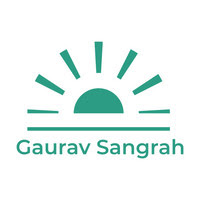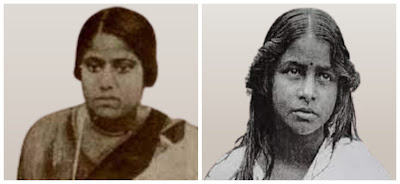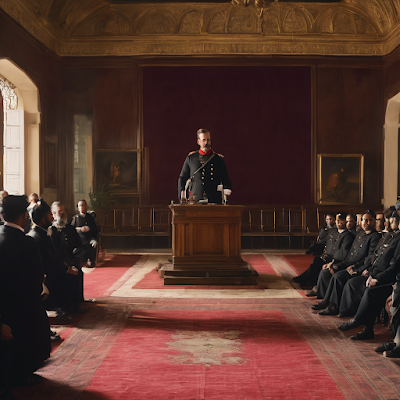Hello friends, how are you all. I hope everyone are healthy and doing progress in life. Today in this article of Gaurav Sangrah, we are going to talk about Bhagat Singh, a revolutionary:
- who used the slogan of Inqlab Zindabad.
- who respected Gandhiji as a leader but ignored his ideas.
- even after passing in front of British, they could not catch him.
- the British were so afraid of him that he was hanged before the appointed time.
So today let us get information about Bhagat Singh.
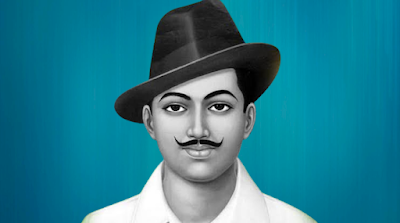 |
| Bhagat Singh |
Who was Bhagat Singh?
Bhagat Singh was born on 28 September 1907 in Banga village of Lyallpur district of Punjab (now Pakistan). Somewhere we find Bhagat Singh's date of birth as 27th September but it is not known whether the date is correct or not. His father's name was Kishan Singh and mother's name was Vidyavati.
As Bhagat Singh's great grandfather had a lot of land, his family was engaged in agriculture. He was educated at the Dayanand Anglo-Vaudic School, Lahore and went to the National College, Lahore.
He was influenced by nationalist teachers named Bhai Parmanand and Jaichand Vindhyaalkar from the time he was in high school. His family were already revolutionaries. His uncle was captured by the British and released on the day Bhagat Singh was born.
What did Bhagat Singh do after hearing the incident of Jallianwala Bagh massacre?
Bhagat Singh was 12 years old when the Jallianwala Bagh massacre took place. When he heard the incident of Jallianwala Bagh massacre, he directly walked from school and reached the incident site in Amritsar.
When he reached Jallianwala Bagh, he saw the blood of innocent countrymen everywhere. The water in the well was red with blood and blood splatters were also visible on the walls. Seeing all these scenes, Bhagat Singh developed more hatred towards the British.
He was so shocked by the killing of innocents that he filled a bottle of blood-stained clay and brought it home with him. He decided to teach the British a lesson at an early age.
How did Bhagat Singh join the revolutionaries?
When Bhagat Singh came to know that his marriage discussion was going on in the house, he left the house. He felt the desire to do something for the country. He had joined the Congress before but he did not agree with the ideas of the Congress so he left the Congress.
He loved to read books of revolutionaries, books like Socialism. He read more than 300 books which he used to read whenever he gets time. In 1925 he founded Navjawan Bharat Sabha. There in the meeting he met:
- Sukhdev
- Yashpal
- Bhagwati Charan Vohra
- Chandrasekhar Azad
- Yatindranath Das
Why did Bhagat Singh boycott the Simon Commission?
In 1927 AD, Sir John Simon came to India and formed the Simon Commission. The rights and regulations of India were framed in this commission. But in this group of MPs there were only seven British members and not a single Indian.
So people boycotted the Simon Commission from across the country. The British baton-charged the protesting people.
Lala Lajpat Rai was also involved in this protest and was baton-charged on him as well. Many were injured in baton charge. Lala Lajpat Rai was so badly injured that he died within a few days.
How did Bhagat Singh Avenged the death of Lala Lajpatrai?
British officer Stoke ordered the baton charge on those who boycotted the Simon Commission. Lala Lajpatrai was killed in baton charge.
To take revenge, Bhagat Singh along with his friends planned to kill the British officer Scott. Bhagat Singh and Rajguru hid near Scott's office to kill him and waited for Scott to come out.
When he came out of the office, Rajguru had shot the Scott once and Bhagat Singh had shot the Scott thrice. Sukhdev and Chandrasekhar Azad also supported him in their escape when both of them ran away after being shooting him.
An Indian police officer came after them to catch them. Bhagat Singh did not wanted to kill him, but because he was working for an Englishman, they also killed him.
How did Bhagat Singh made British felt insulted?
Bhagat Singh went to kill Scott but instead, John P. Sondanus was dead. After killing him, Bhagat Singh wrote on the walls that John P. Avenged the death of Lala Lajpatrai by killing Sondanus.
The British were enraged by this incident as they felt insulted. The British were looking for Bhagat Singh and his companions in a confined place in Lahore and were also keeping an eye on the passengers coming and going to the railway station.
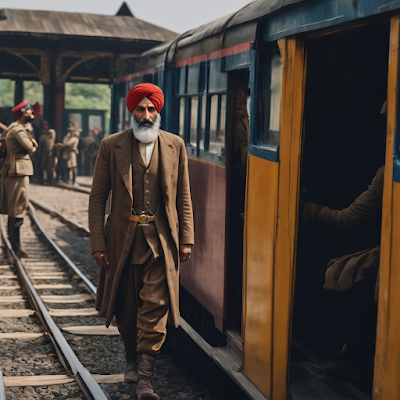 |
| Bhagat Singh escaping in front of British |
Bhagat Singh used a trick. He disguised himself as a Sardar and boarded a train to Calcutta in front of Britishers without falling into their hands.
Why did Bhagat Singh threw bomb in the Parliament (Assembly)?
Bhagat Singh wanted to convey the message to the people. If the country wants to be freed, we will have to fight with the British, then the country will be freed soon. He wanted to bring revolution in the country.
 |
Smoke Bomb in Parliament
|
To convey the message to the people, Bhagat Singh along with Batukeshwar Dutt threw a bomb in an empty space in the full house of Parliament in such a way that no one was harmed. They were not destroyed by the bomb, they dropped papers in the meeting saying "A blast is needed to make the deaf hear".
Only smoke came out of the bomb that was planted in Parliament. Bhagat Singh had an escape route but he didn't escaped through it and was deliberately got into the hands of the British. He was jailed and many charges were laid against him.
For what reason was Bhagat Singh hanged?
Bhagat Singh did not escape or fall into the hands of the British. Since then the British were looking for him in Lahore on the charge of murdering John P. Sondanus. When he himself was caught throwing the bomb, he was charged with several crimes and sentenced to death.
The British decided to execute Bhagat Singh, fearing that if he was released with a lenient sentence, it would burden the British. He was announced to be hanged on March 24. If Gandhiji appealed to the Viceroy to pardon the death sentence of Bhagat Singh, the sentence could have been pardoned, but Gandhiji did not do so.
How much the Britishers were afraid of Bhagat Singh?
He was scheduled to be sentenced on March 24, but the sentence was brought forward a day. Because the British were afraid that on the day of execution, the people can cause any trouble to them.
The British were so afraid of Bhagat Singh that he had to be hanged in any case. He was to be hanged on the 24th at 6 am but it was given in the evening a day before. The British executed Bhagat Singh on 23 March 1931 at 7:33 PM in Lahore Center Jail due to the fear of the people, which is usually not carried out in the evening.
Bhagat Singh was 23 years old when he was sentenced. Along with him, Rajguru and Sukhdev were also hanged. Before the hanging, the three embraced each other and held the rope around their necks.
Conclusion:
In this article we saw one of the greatest Freedom Fighter in Indian History. He had no fear of execution. Before his execution he was reading the book of "Lenin" the revolutionary.
After hanging, the body of the deceased should be given to the family members but the British did not give the body of Bhagat Singh. The body was thrown into the river Sutlej, but some people saw that the body was being thrown into the river. People took the dead body out and performed the last rites.
The more we talk about him, the less it is. So here we conclude this article. So readers, how did you like this article? What is your favorite paragraph in this article? What new do you get to know in this article? Want to add something about this article? If I have forgotten anything do mention your opinion in the comment section.
Thank you very much for reading this article till the end.
If you liked reading the article, do share it with your friends and family.
We will meet you in another article with another such Freedom Fighter from Indian History, till then take care and keep on reading Gaurav Sangrah



